The State of the Staffing Industry: 2024 Prodoscore Data Review
This report presents the findings of our 2024 research on the state of the staffing industry. The data was collected and analyzed by Prodoscore’s Data Science team using the ProdoLabs™ platform. The research focused on several key areas, including organizational hierarchy and attrition, productivity trends (both in-office and remote), employee meeting and activity habits, and the impact of employee productivity monitoring (EPM) on productivity.
Research Population
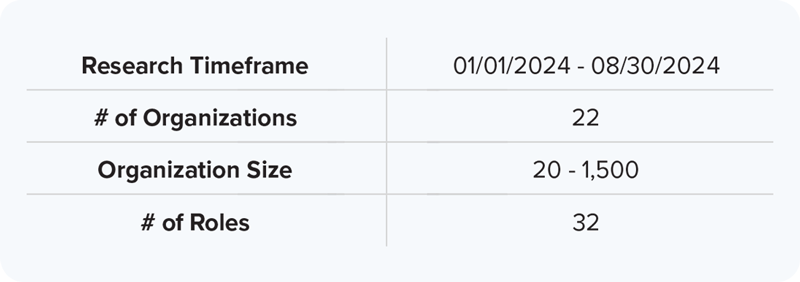
Key Findings
Impact of Manager Count on Employee Attrition
High Attrition Organizations:
Managers have an average of 12 direct reports.
Low Attrition Organizations:
Managers have an average of 5 direct reports.
Employee-Manager Communication:
In high-churn organizations, there is a lack of communication between employees and their managers.
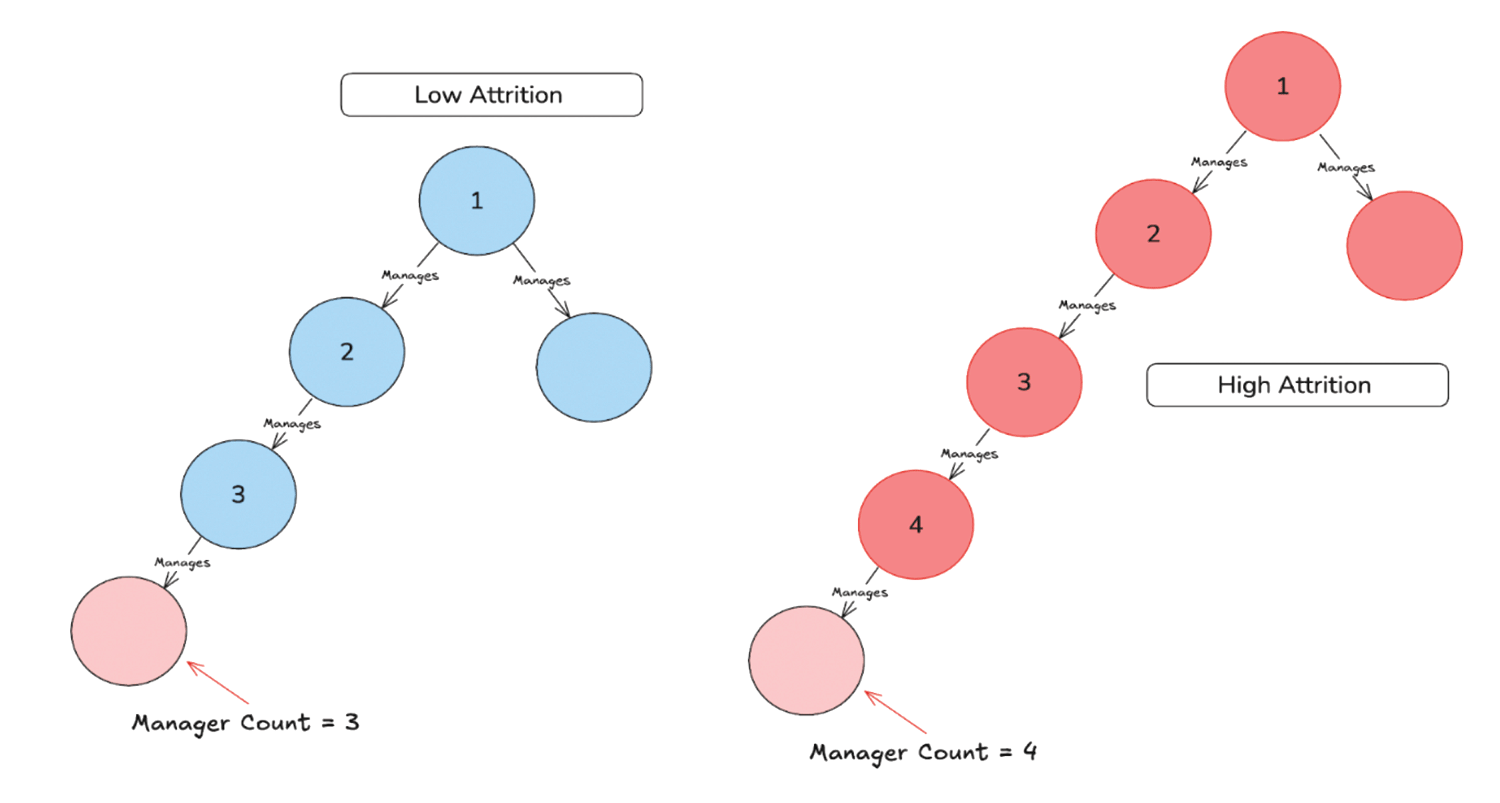
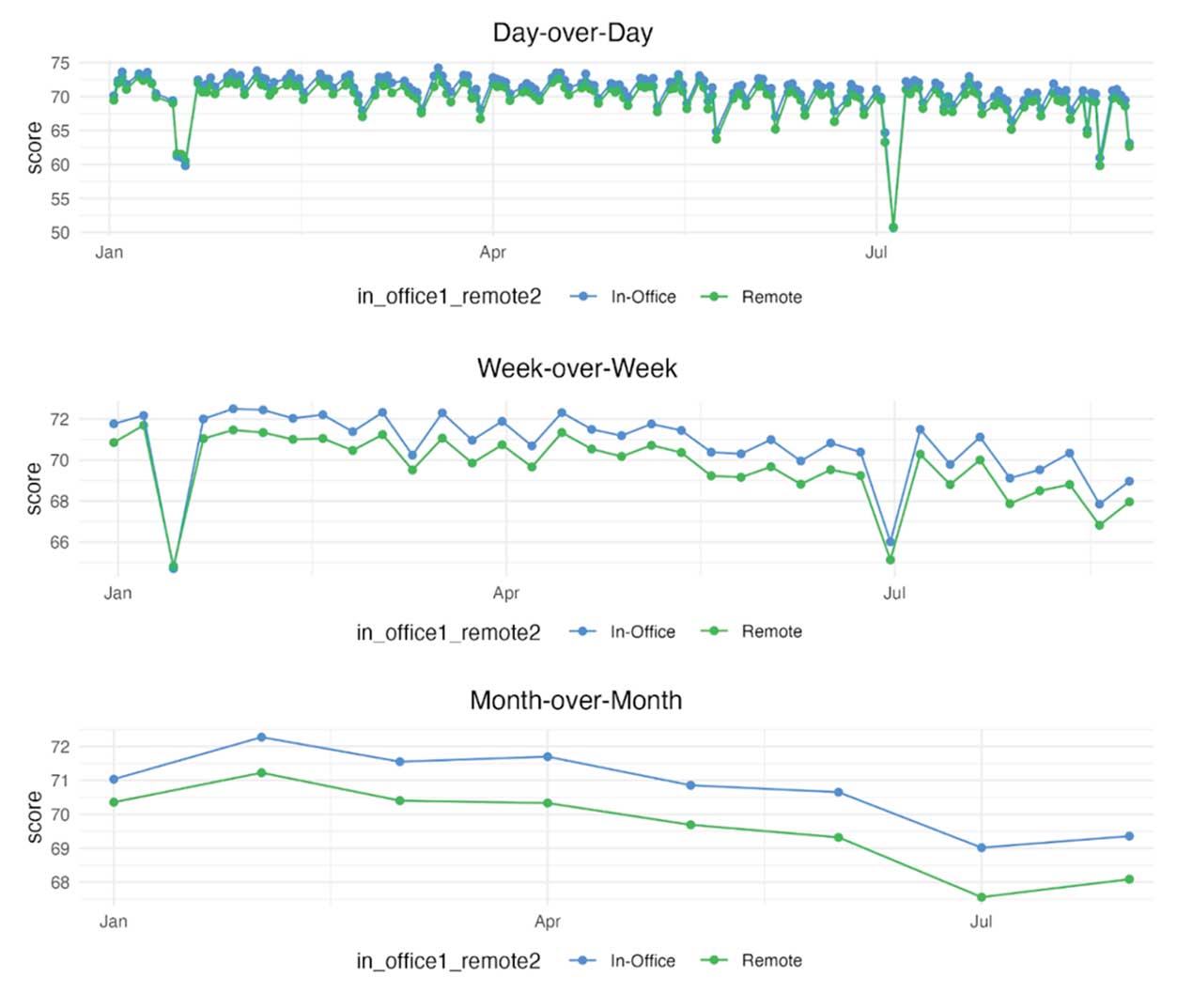
In-Office vs. Remote Productivity Trends
- There is no significant difference in productivity levels between in-office and remote employees.
General Productivity Trends
- A general decline in productivity was observed from January to July.
- An increase in productivity was observed starting in August, with a boost in activity within various cloud tools including Documents, Meetings and the Applicant Tracking System (ATS).
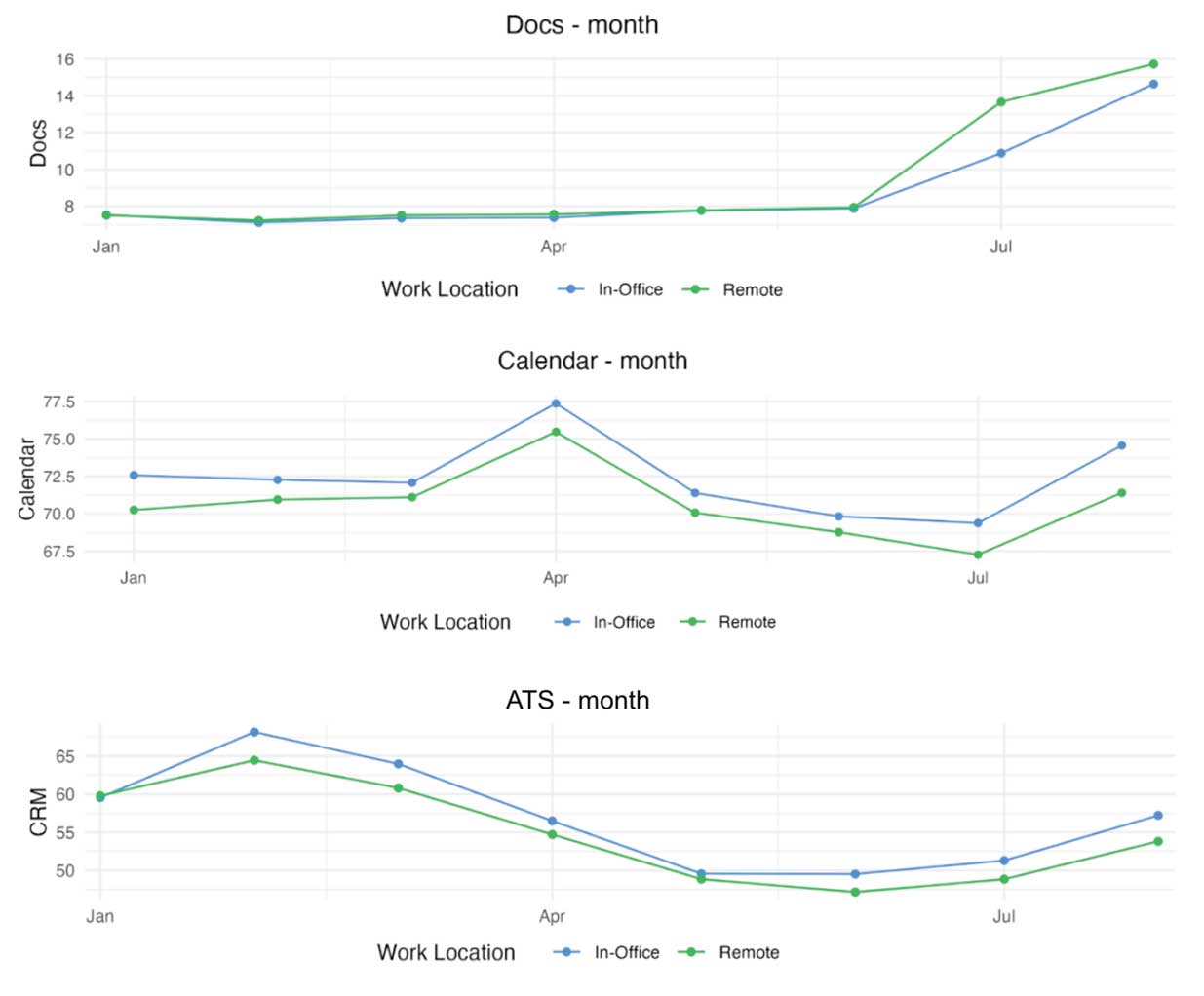
Employee Meeting & Activity Habits
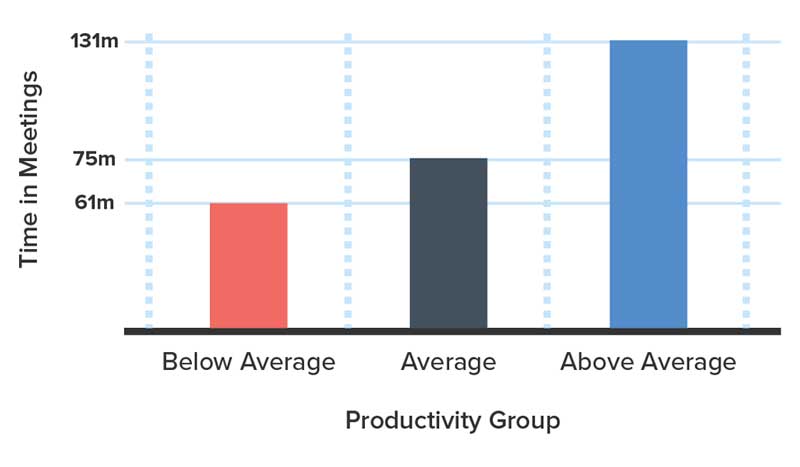
Meeting Time:
Employees with above-average productivity spend 50% more time in meetings and work more than 50% more hours each day.

Work Distribution:
Below-average productivity employees tend to push work into the latter part of the day while average and above average productivity employees have a fairly even split between morning and afternoon.
The Impact of EPM on Productivity
Implementing Prodoscore led to an 11% increase in productivity within 4 months. That figure rose to 23% during the first 12 months.
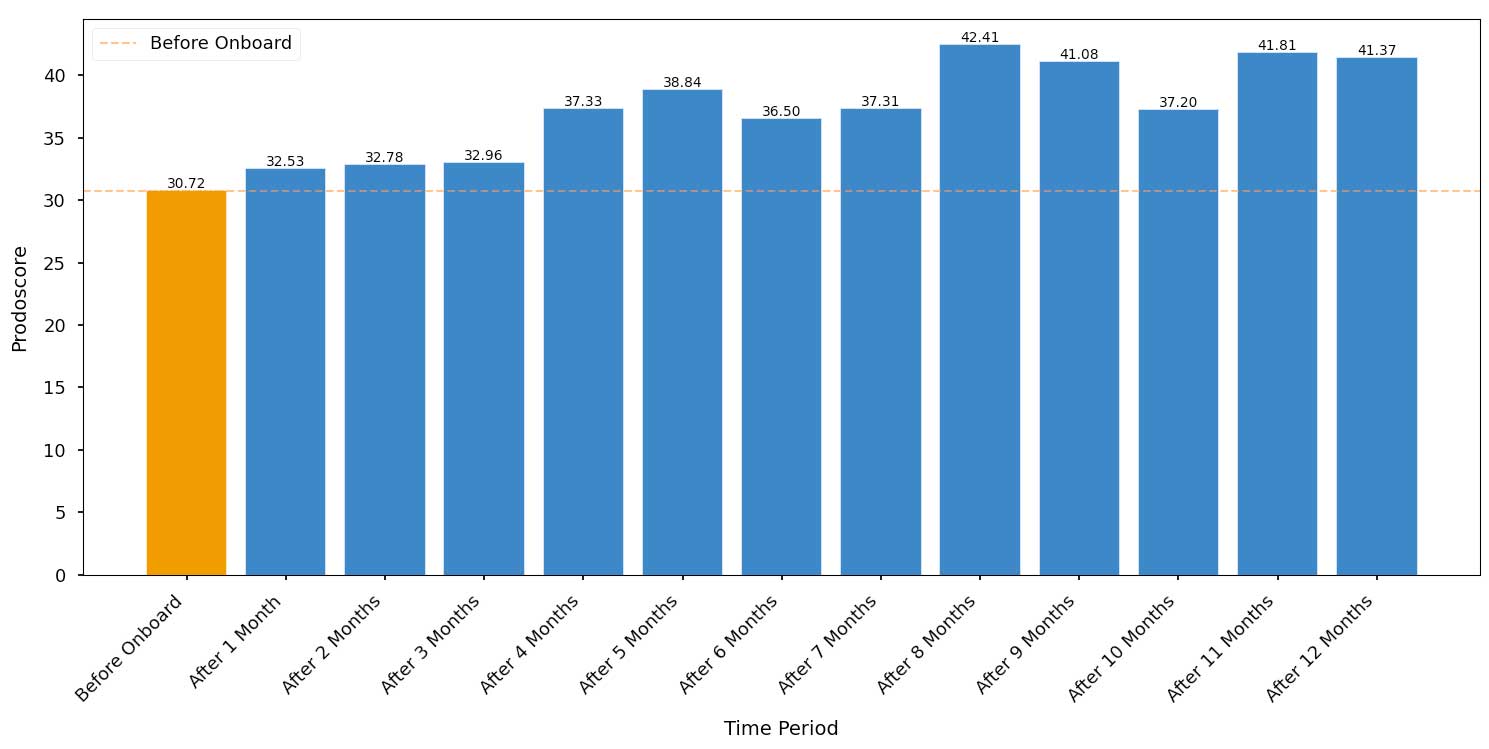
Productivity Increase:
Implementing Prodoscore led to a 11% increase in productivity within four months.
Sustained Increase:
That figure rose to 23% during the first 12 months.
Conclusion
Our research provides valuable insights into the current state of the staffing industry. The findings highlight the importance of limiting managerial layers, how productivity differs across different types of employees, and the role of employee productivity monitoring in driving productivity. The data also suggests that remote work arrangements can be as productive as in-office work, challenging traditional assumptions.
Recommendations
Optimize Management Structures:
Our research indicates that teams with more than six members face a higher risk of at least one team member not being contacted by their leader weekly.
Foster Communication:
Emphasize the importance of regular communication between managers and employees, especially if the worker-to-manager ratio exceeds six.
Implement EPM:
Consider implementing employee productivity monitoring software to provide insight into how employees work in order to make better informed decisions and rely on objective data to drive success.
Embrace Flexible Work Arrangements:
Offer remote or hybrid work options to attract and retain talent.
Ready to up your game in business productivity and performance metrics?
Get in touch with one of our experts.